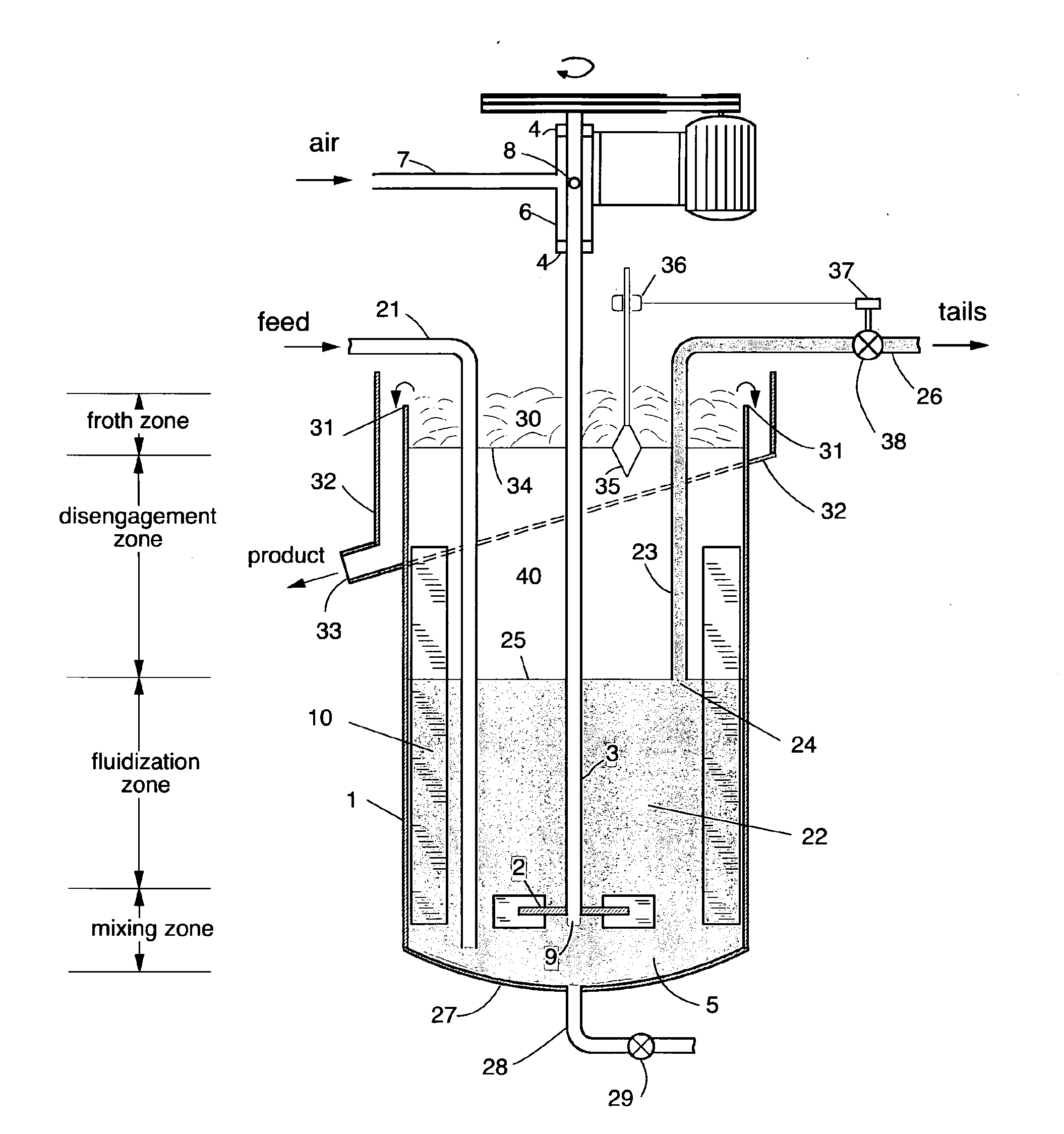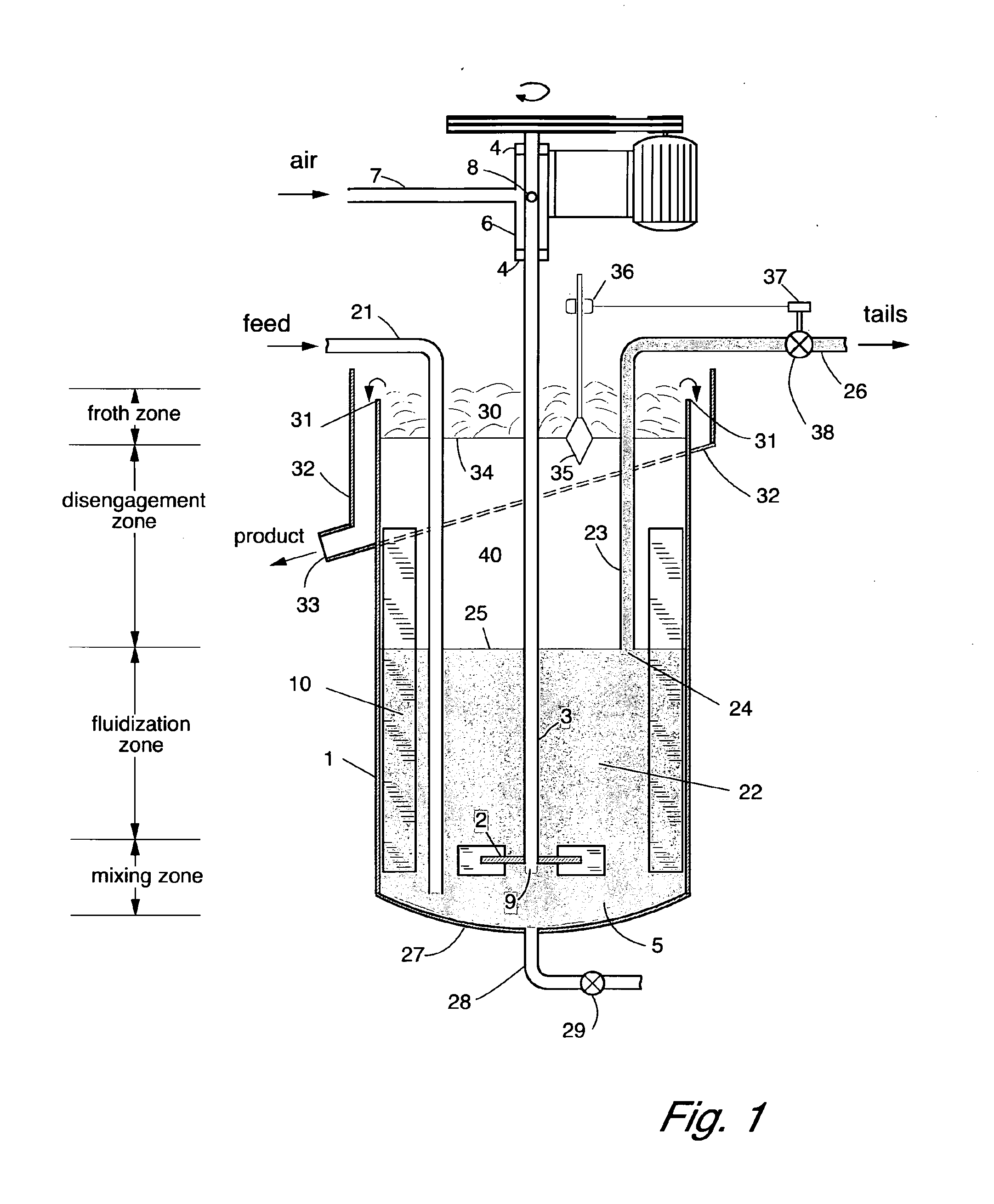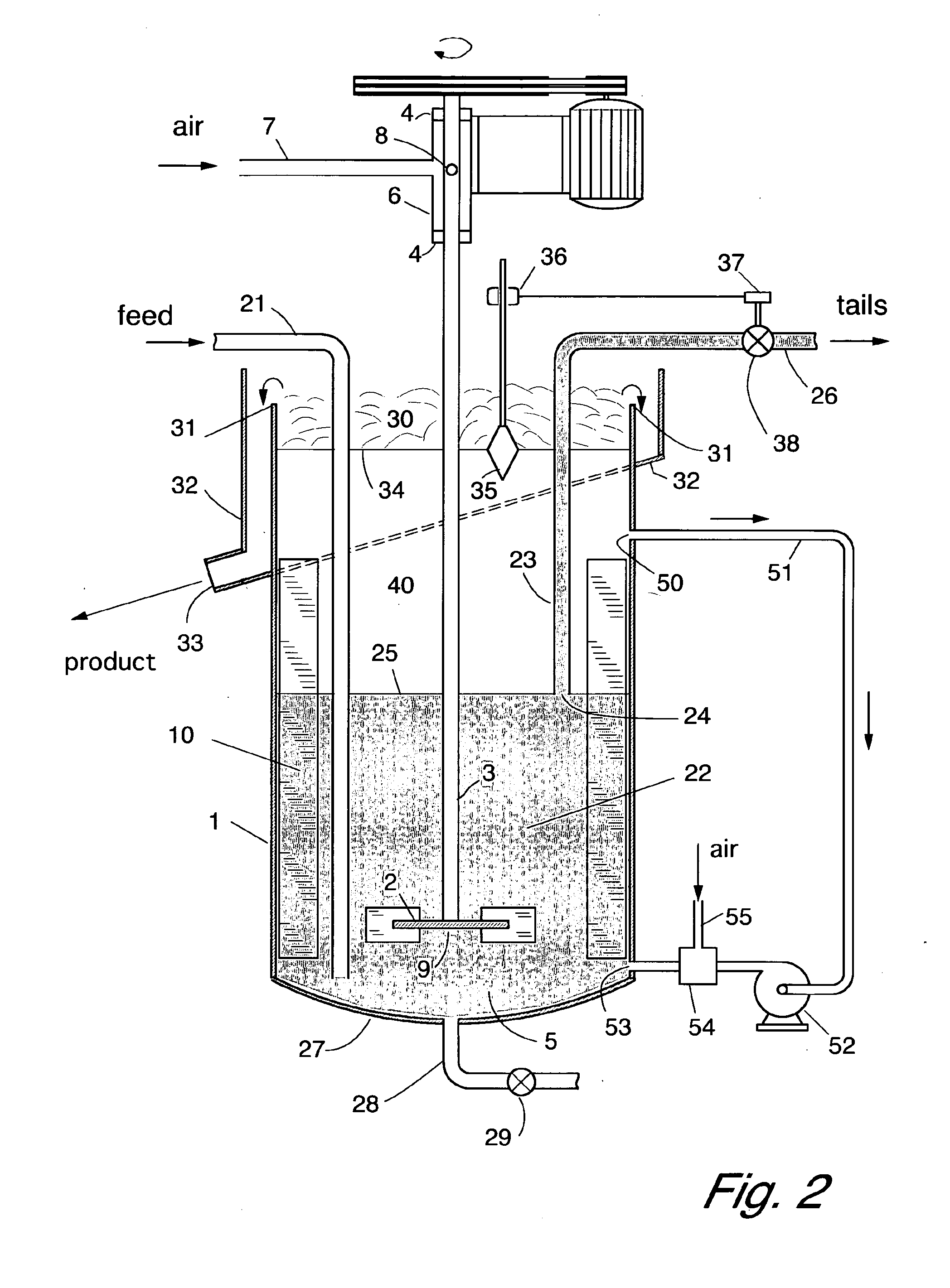Improved method and apparatus for froth flotation in a vessel with agitation
a technology of agitation and flotation vessel, which is applied in the direction of flotation, evaporator with heating coil, solid separation, etc., can solve the problems of particle detachment from the bubble, inability to recover the maximum size of particles efficiently, and large centrifugal force, so as to improve the efficiency of flotation and reduce the volume fraction of particles , the effect of low hydraulic resistan
- Summary
- Abstract
- Description
- Claims
- Application Information
AI Technical Summary
Benefits of technology
Problems solved by technology
Method used
Image
Examples
example
[0078]A flotation cell was constructed according to the invention, and operated in batch mode. A sample of high-grade galena was used as the floatable material, and it was mixed with graded silica particles as a source of non-floatable material. The galena was crushed and sieved to provide a sample in the size range 45 to 1400 micrometres. The silica was in the size range 250 to 710 micrometres. The galena:silica mass ratio was 1:19 and the sample volume was 1.05 litres. The cell diameter was 100 mm, with a froth zone of diameter 63 mm and height 150 mm. The overall height of the cell was 920 mm. The cell was fitted with an impeller of diameter 70 mm operating at 150 rpm, with a tip speed of 0.55 m / s. When fluidized with recirculation fluid a clear transition could be seen through the transparent cell wall, between the top of the fluidization zone and the disengagement zone. The contents of the cell were fluidized with fluid taken from the disengagement zone and recycled through a b...
PUM
 Login to View More
Login to View More Abstract
Description
Claims
Application Information
 Login to View More
Login to View More - R&D
- Intellectual Property
- Life Sciences
- Materials
- Tech Scout
- Unparalleled Data Quality
- Higher Quality Content
- 60% Fewer Hallucinations
Browse by: Latest US Patents, China's latest patents, Technical Efficacy Thesaurus, Application Domain, Technology Topic, Popular Technical Reports.
© 2025 PatSnap. All rights reserved.Legal|Privacy policy|Modern Slavery Act Transparency Statement|Sitemap|About US| Contact US: help@patsnap.com



